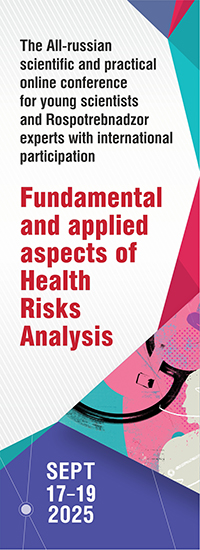Main research lines
The main theoretical and practical objectives:
- to develop methods of clinical and laboratory diagnostics of environmental pathologies, including quick tests and testing systems;
- to develop and apply novel chemical analytical methods of environmental objects and biological media control;
- to assess cause-effect relationship between the level and the range environmental load in different areas, and the nature of environmental pathology;
- to substantiate and apply novel specific schemes and methods of therapy, prevention and rehabilitation with their efficiency evaluation;
- to substantiate acceptable levels of environmental factors impact on health in regions;
- to provide software, dataware and mathematical support for healthcare and environmental management.
The Center performs research and clinical investigations.
The Center has established the Academic Council and the Young Researchers Council.
Professor Nina V. Zaitseva, Head of the Center, has formed her own scientific school.
The Federal Center offers postgraduate training.
The Federal Center includes GIS-center established to process data and use them efficiently to solve scientific and applied geographic problems concerning environmental inventory, analysis, modeling, environmental and population health prognosis and management.
The Center performs unique laboratory research that allows determination of pollutant concentrations as low as 0.000001 μg, including heavy metals and reactive organic compounds, in the environment and human biological media (blood, urine, hair, human milk, bile, etc.). 30 toxicants are determined in emissions and wastewater of enterprises in Perm Region. Quick tests and testing systems are used to diagnose the functional state of the human organism by more than 70 indicators.
The Center has an archive for medical and demographic, environmental and social data for the period of 1981-2006. This data bank is used to process data, including cluster, factor analysis and other multivariate statistical and mathematical modeling methods. We apply new information technologies (ARC/Info GIS, SAS). Data are collected jointly with The Regional Medical Statistics Office and Central Statistics Department.




